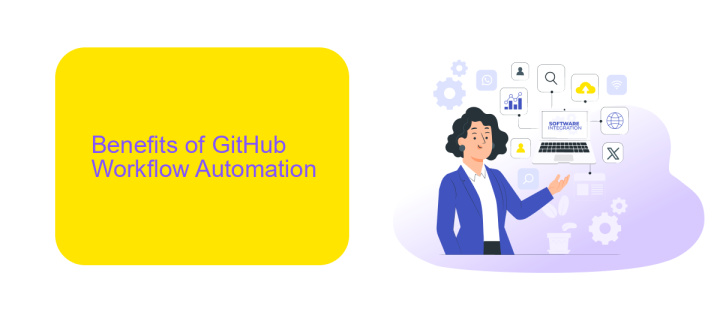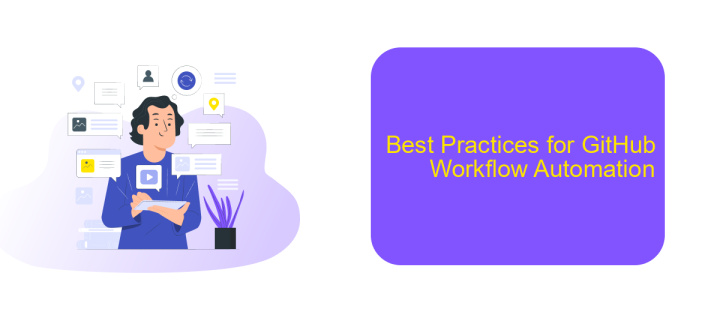GitHub Workflow Automation
GitHub Workflow Automation streamlines the development process by automating repetitive tasks, enhancing collaboration, and boosting productivity. By leveraging GitHub Actions, developers can create custom workflows to automate code testing, deployment, and other critical operations. This article explores the fundamentals of GitHub Workflow Automation, providing insights and practical examples to help you optimize your development pipeline.
Introduction
GitHub Workflow Automation allows developers to streamline their development processes, enhancing efficiency and reducing manual tasks. By automating workflows, teams can ensure consistent code quality, faster deployments, and seamless collaboration. This approach not only saves time but also minimizes human error, making it a critical component of modern software development.
- Automate repetitive tasks to save time
- Ensure consistent code quality and standards
- Facilitate seamless collaboration among team members
- Enable faster and more reliable deployments
Integrating various tools and services into your GitHub workflows can further enhance automation capabilities. For instance, ApiX-Drive provides a powerful solution for connecting different applications and automating data transfers between them. By leveraging such integrations, developers can create more robust and efficient workflows, ultimately driving better project outcomes.
Benefits of GitHub Workflow Automation

Implementing GitHub workflow automation offers numerous benefits, significantly enhancing productivity and efficiency. By automating repetitive tasks, developers can focus more on writing quality code and less on manual processes. This not only speeds up the development cycle but also reduces the risk of human error, ensuring more consistent and reliable outcomes. Additionally, automated workflows can improve team collaboration by providing clear, predefined steps that everyone can follow, facilitating smoother project management and communication.
Moreover, integrating services like ApiX-Drive can further streamline your GitHub workflows. ApiX-Drive allows seamless integration between various tools and platforms, ensuring that data flows effortlessly between them. This can automate notifications, synchronize data, and trigger actions across different services, making your development process even more efficient. By leveraging such integrations, teams can save time, reduce operational overhead, and maintain a more agile development environment, ultimately leading to faster delivery of high-quality software products.
How to Automate GitHub Workflows

Automating GitHub workflows can significantly enhance your productivity and streamline repetitive tasks. By leveraging GitHub Actions, you can create custom workflows that trigger on specific events, such as pushing code or creating pull requests.
- Create a new file in your repository under the
.github/workflowsdirectory and name it with a.ymlextension. - Define the events that will trigger the workflow using the
onkeyword, such aspushorpull_request. - Specify the jobs to be executed in the workflow. Each job can run on different environments and include multiple steps.
- Use predefined actions from the GitHub Marketplace or create your own custom actions to perform specific tasks within your workflow.
- Optionally, integrate external services like ApiX-Drive to automate data transfers and notifications across different platforms.
By following these steps, you can create efficient and automated workflows that save time and reduce manual effort. GitHub Actions offers a powerful and flexible way to automate various aspects of your development process, making it easier to manage and deploy your projects.
Best Practices for GitHub Workflow Automation

Effective GitHub workflow automation can greatly enhance your development process. To achieve this, it's crucial to follow best practices that ensure efficiency, reliability, and maintainability. Start by clearly defining your workflow goals and identifying repetitive tasks that can be automated.
Next, ensure that your workflows are modular and reusable. This makes it easier to update and maintain them over time. Use descriptive names and comments to make your workflows self-explanatory, which is essential for team collaboration.
- Keep workflows simple and focused on a single task.
- Use environment variables to manage sensitive information securely.
- Regularly test and review your workflows to catch any issues early.
- Leverage third-party services like ApiX-Drive for seamless integration and automation of various tools and platforms.
- Document your workflows thoroughly to ensure that all team members understand their purpose and functionality.
By adhering to these best practices, you can create robust and efficient GitHub workflows that streamline your development process. Integrating tools like ApiX-Drive can further enhance your automation capabilities, making it easier to manage and synchronize various services and applications.
Conclusion
In conclusion, automating workflows on GitHub can significantly enhance productivity and streamline development processes. By leveraging GitHub Actions, developers can automate tasks such as continuous integration, deployment, and code reviews, thereby reducing manual effort and minimizing the risk of human error. This not only accelerates the development cycle but also ensures higher code quality and consistency across projects.
Furthermore, integrating third-party services like ApiX-Drive can further optimize your workflow automation. ApiX-Drive allows seamless integration between various applications and services, enabling automated data transfers and task management. This can be particularly useful for synchronizing GitHub with other tools your team uses, ensuring a cohesive and efficient development environment. Embracing these automation strategies will not only save time but also empower your team to focus on more critical and creative aspects of development.
FAQ
What is GitHub Workflow Automation?
How do I create a GitHub Action?
Can I integrate third-party services with GitHub Workflow Automation?
What are some common use cases for GitHub Workflow Automation?
How do I troubleshoot a failing GitHub Action?
Apix-Drive is a simple and efficient system connector that will help you automate routine tasks and optimize business processes. You can save time and money, direct these resources to more important purposes. Test ApiX-Drive and make sure that this tool will relieve your employees and after 5 minutes of settings your business will start working faster.

